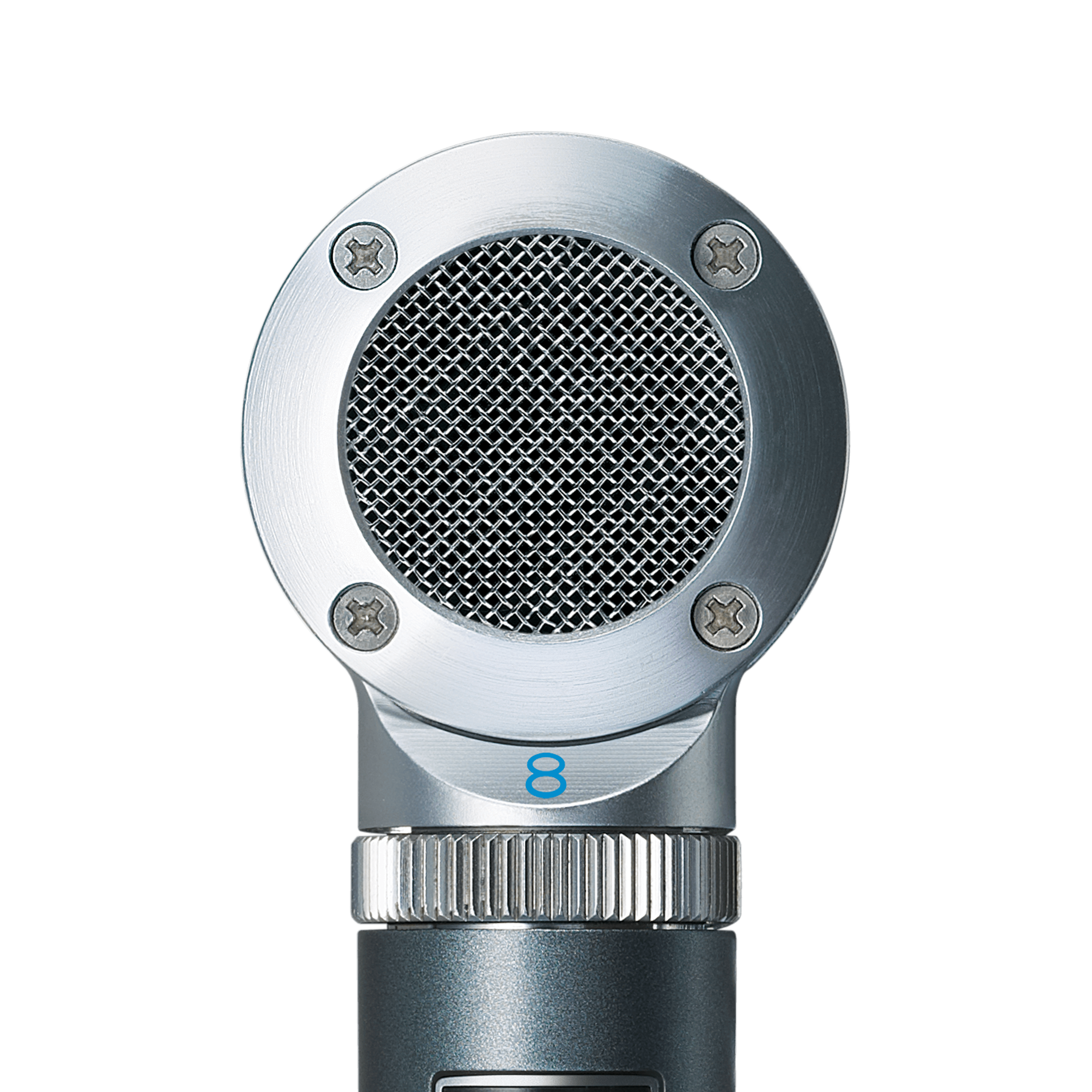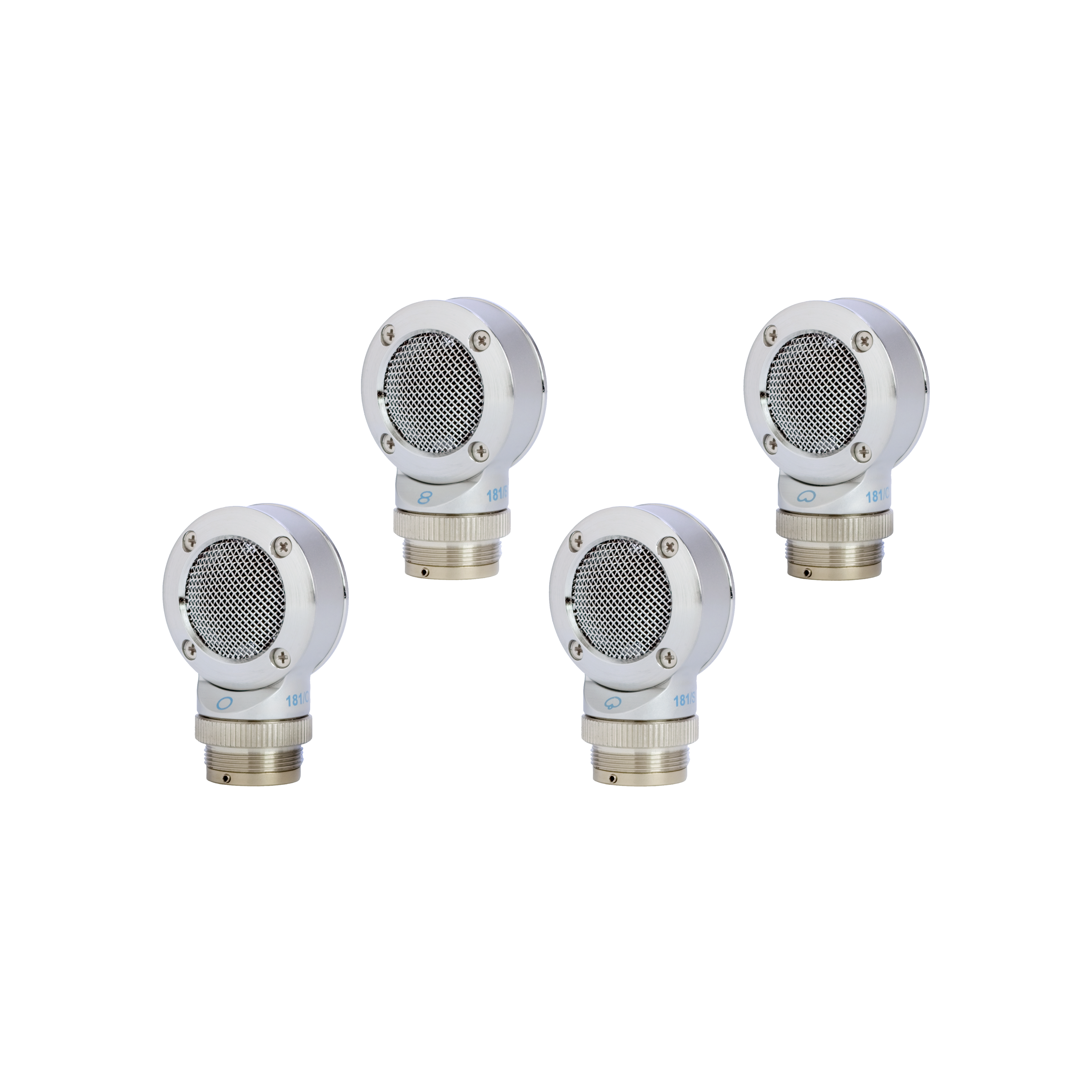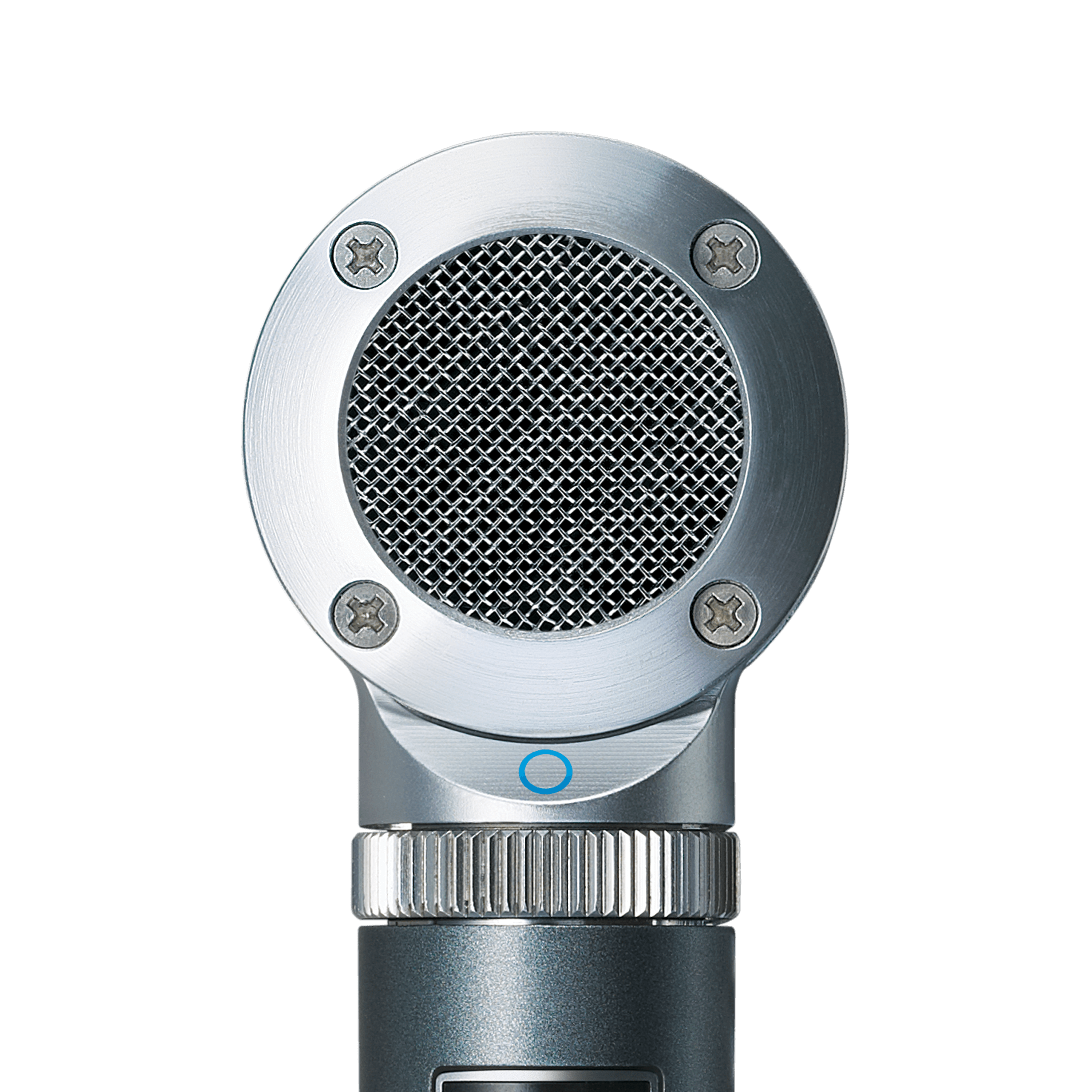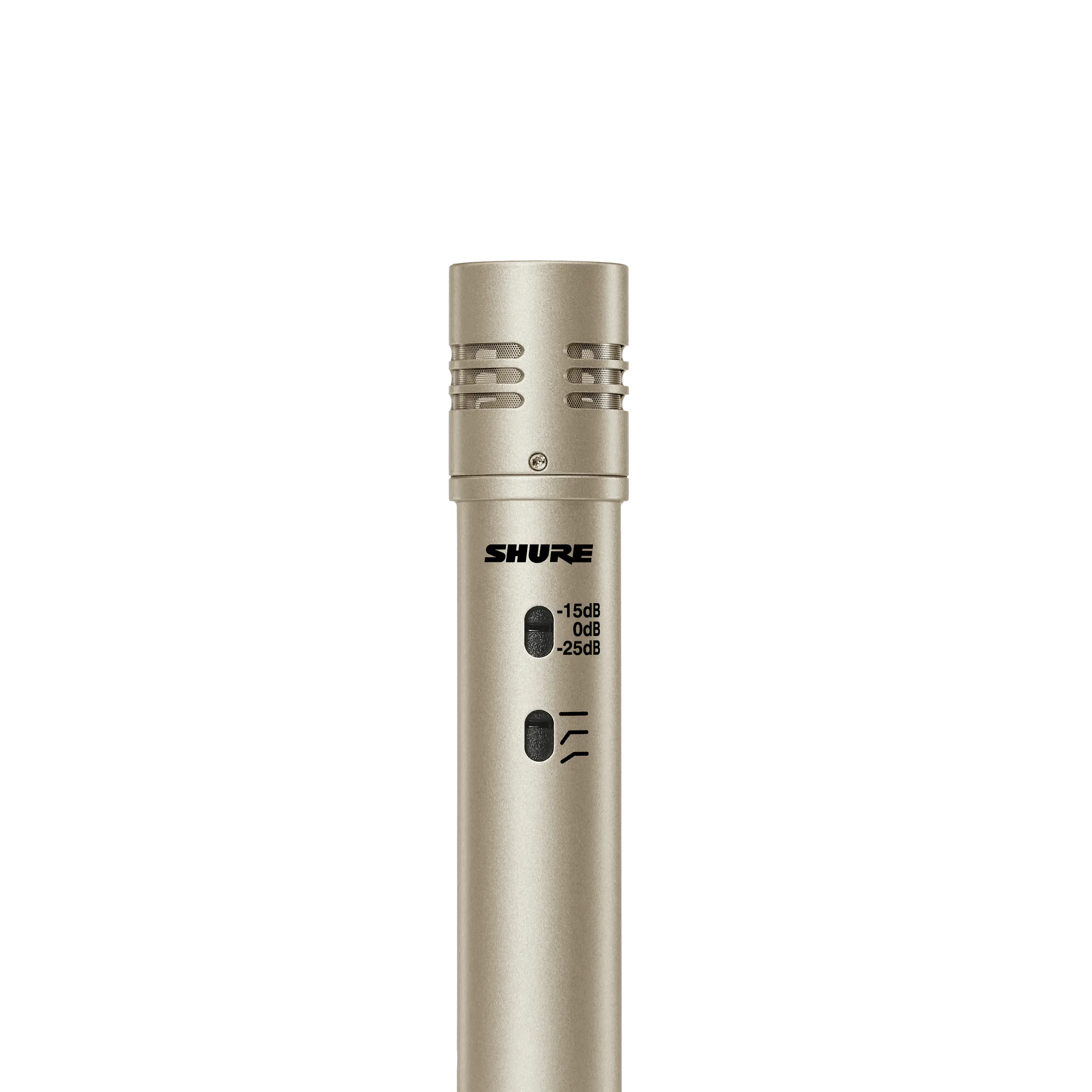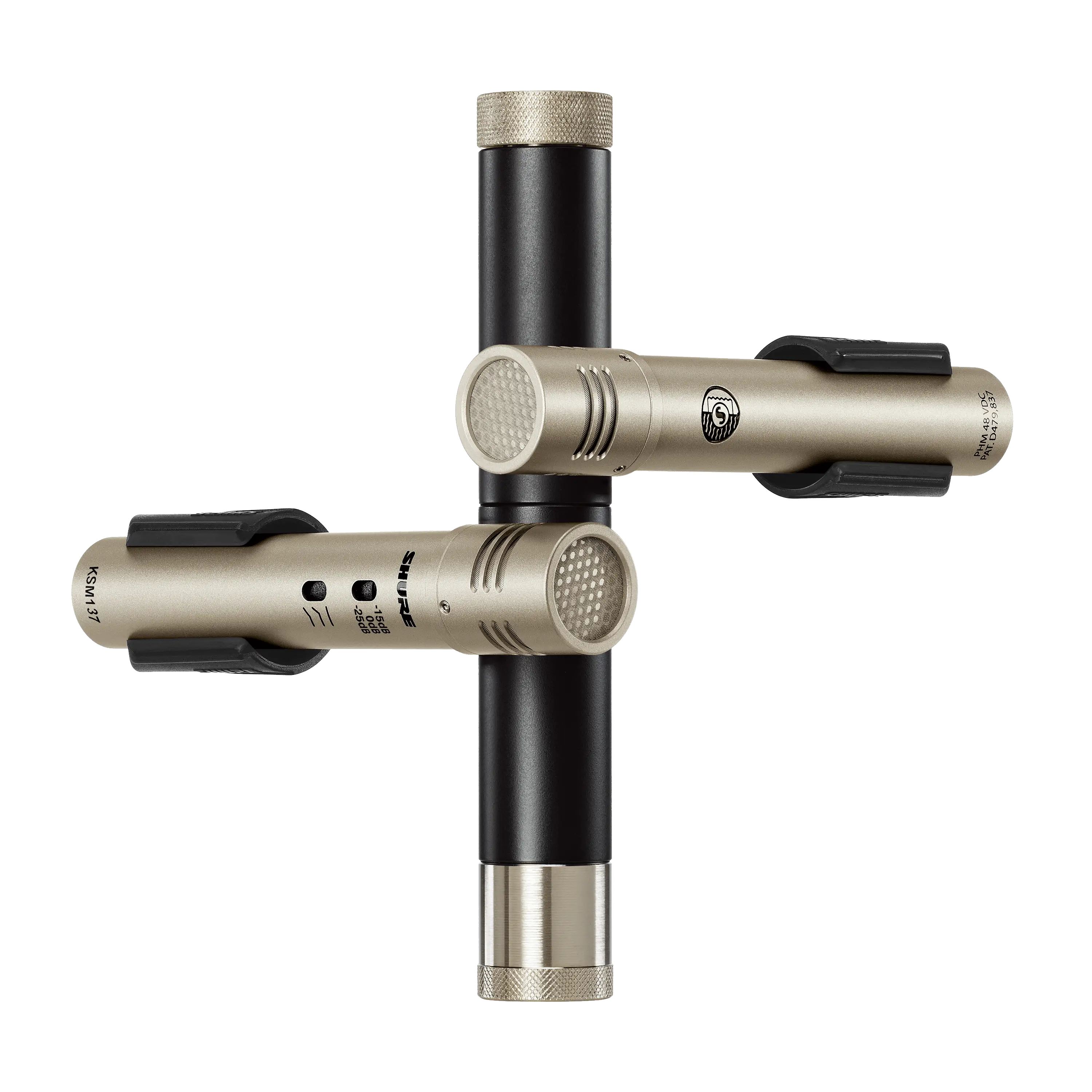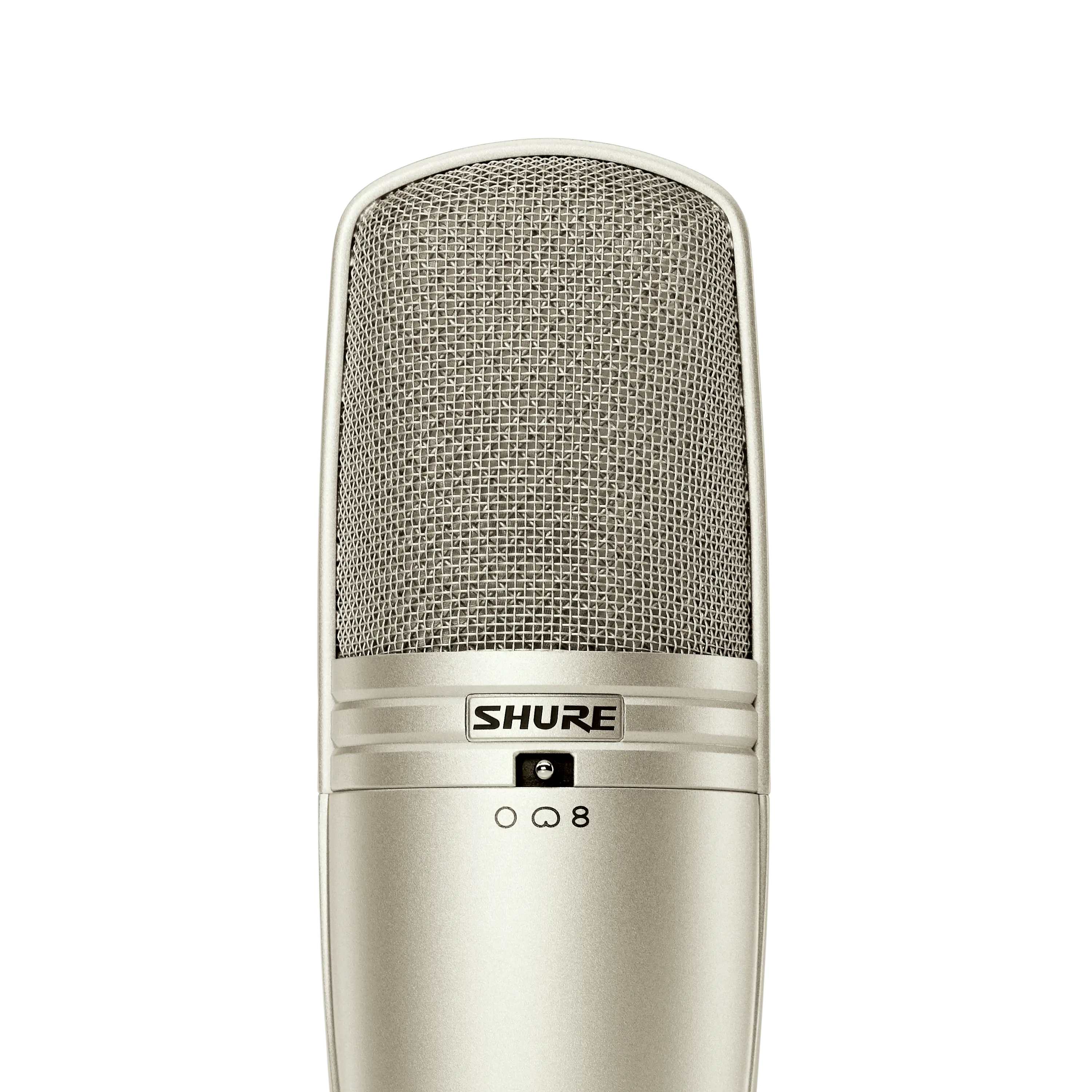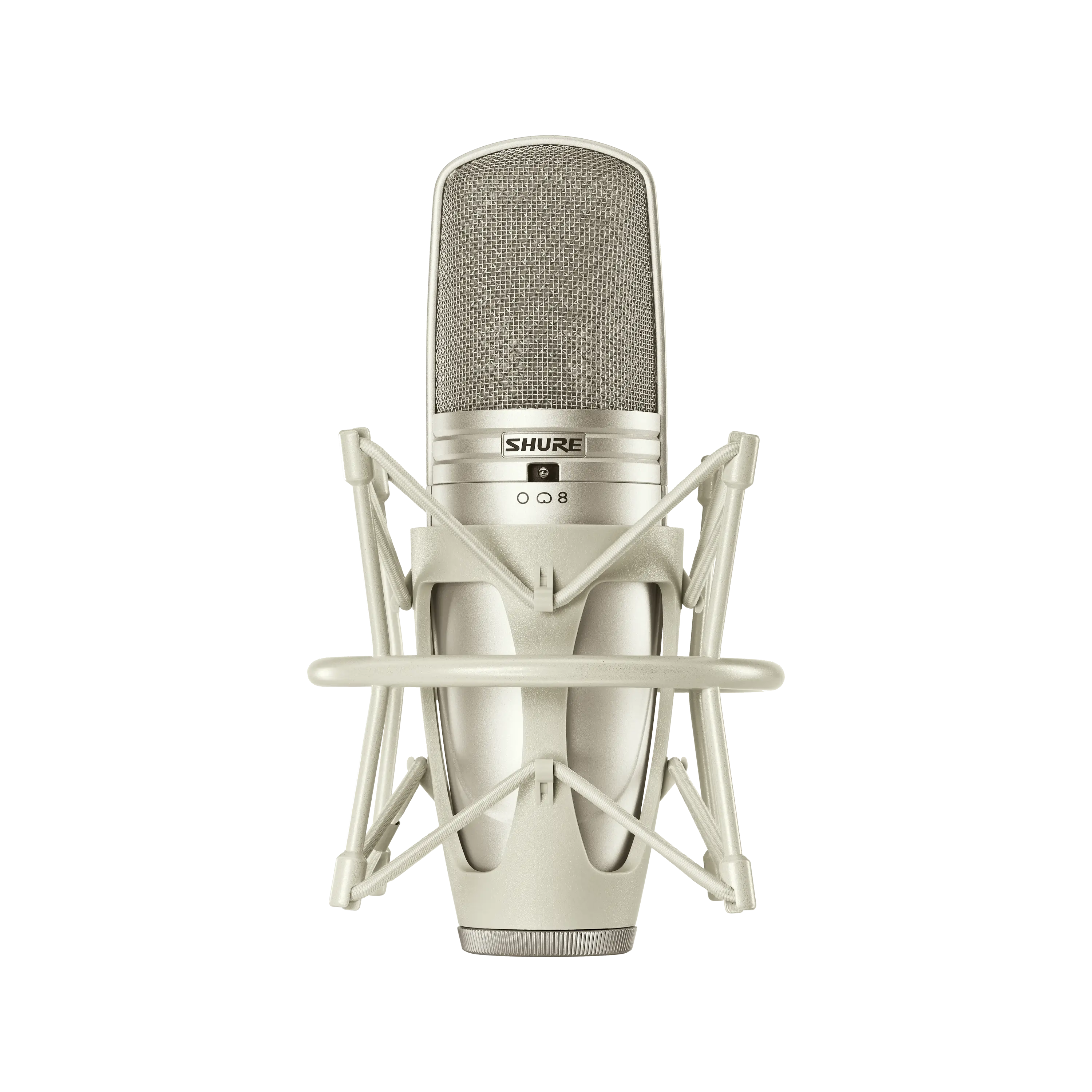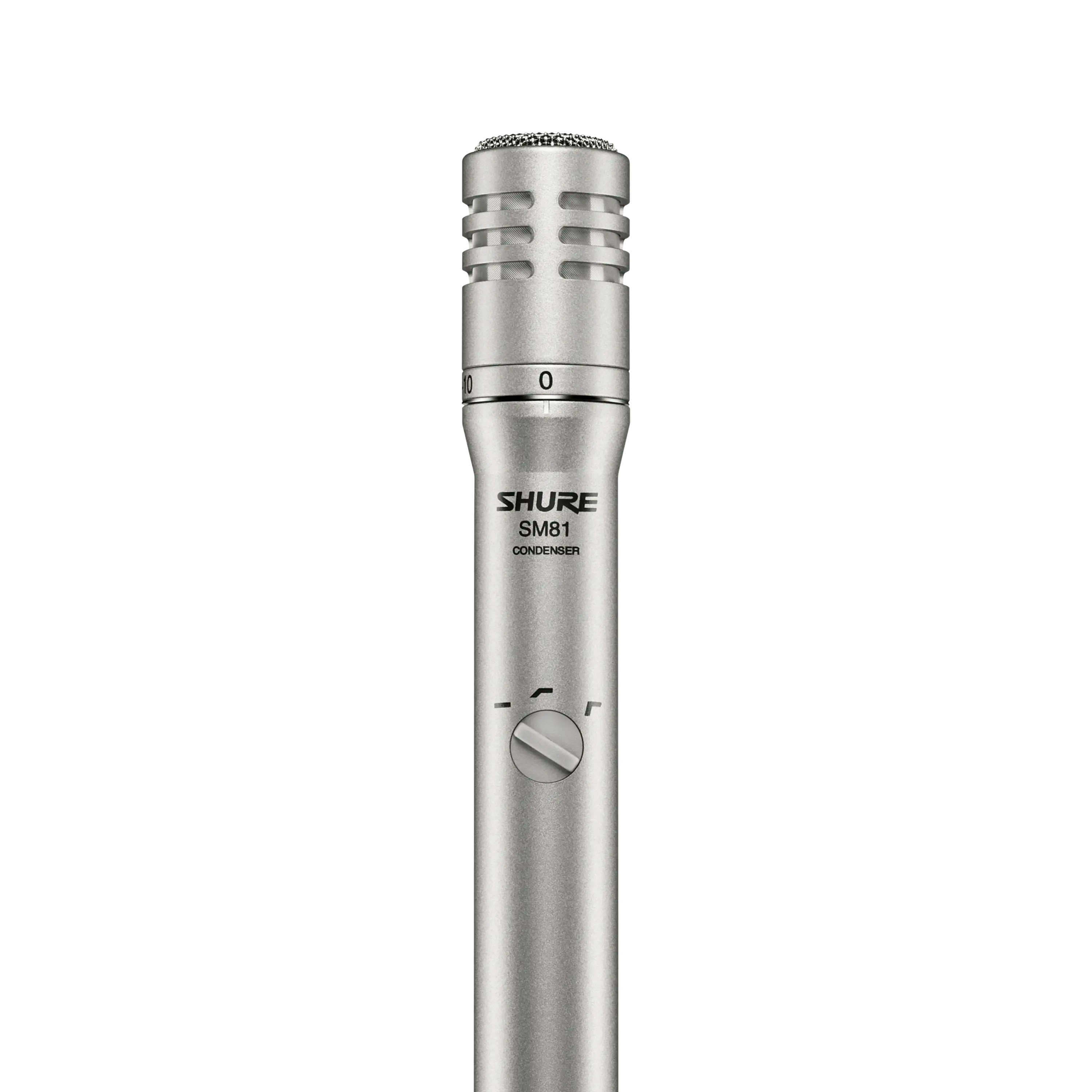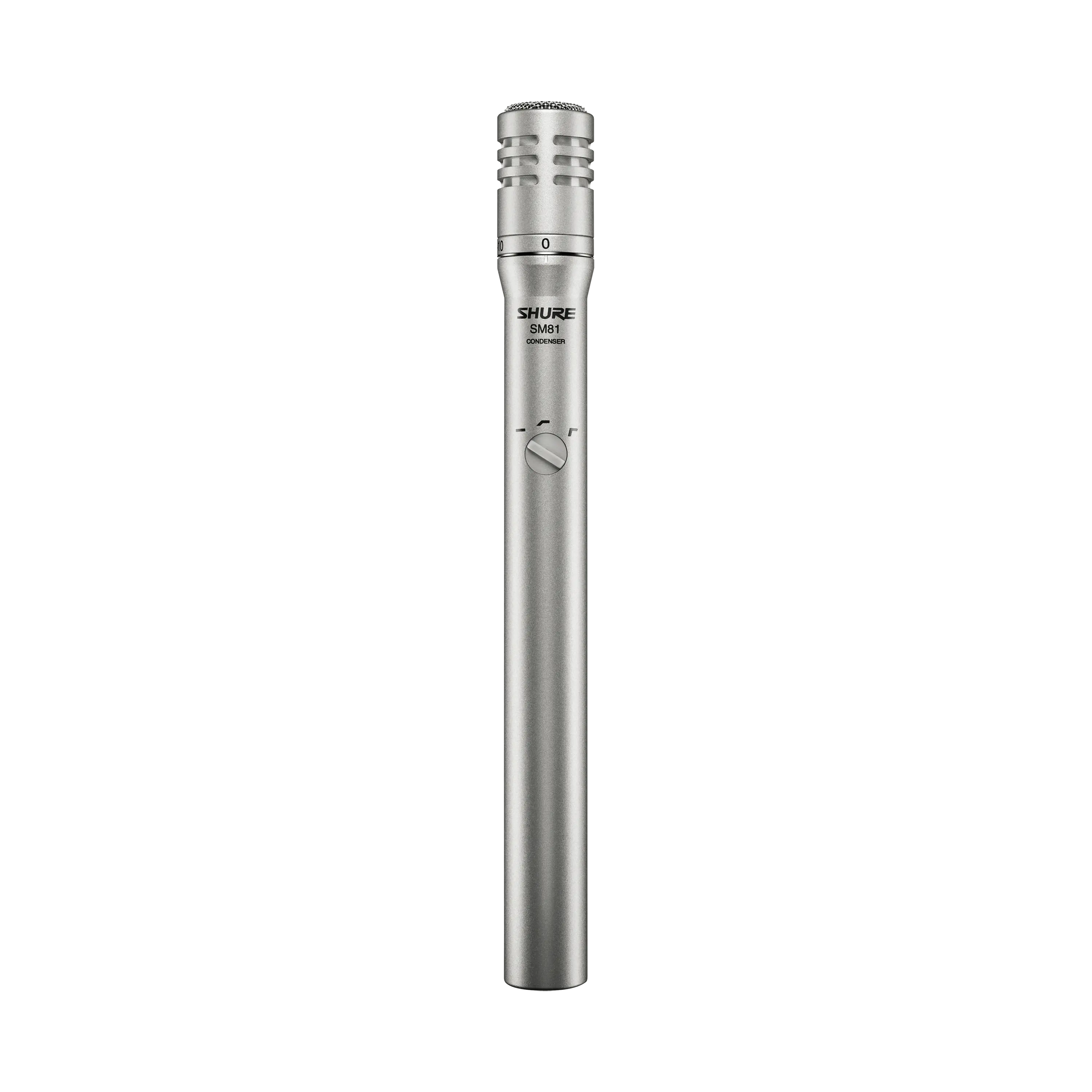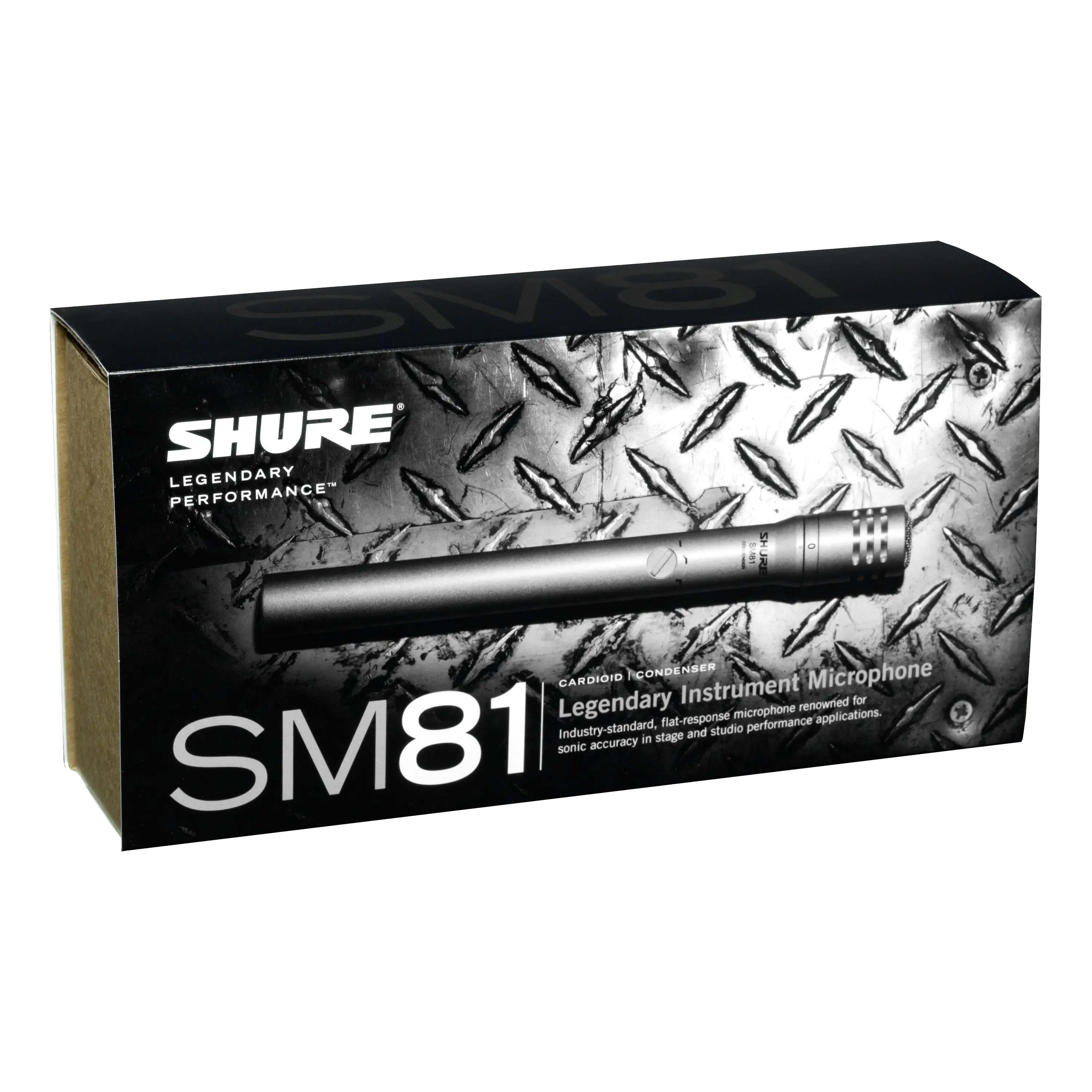The History of Condenser Microphones and Artifacts from the Shure Archives

There are thousands of treasures to choose from in the Shure Archives and each has its own story. In this installment, Shure resident historian MICHAEL PETTERSEN discusses condenser microphones and introduces a few favorites from the collection.
The condenser microphone, like the carbon mic, has its origin in telephony. In 1916, Edward Christopher (E.C.) Wente of Bell Laboratories was tasked with the challenge of improving telephone audio. The 1916 patent he received for a ‘telephone transmitter’ led to the development of the condenser cartridge for electric sound recording. Twelve years later, Germany’s Georg Neumann and Company introduced a mass-produced condenser microphone, the bottle-shaped CMV3.
The Operating Principle
All microphone cartridges – regardless of type - are transducers that convert sound waves into electrical energy. To understand how condenser microphones work, here is an excerpt and a diagram from “Microphones Explained for Beginners”, an article that appeared in the August 1938 issue of “Radio-Craft” magazine:

"A condenser microphone has a transducer element that includes an integral variable capacitor. The diaphragm of the condenser microphone constitutes one of the plates of a variable air condenser, while the back plate, which is separated from the diaphragm by a film of air about 1/1,000 inch thick, acts as the other plate. Capacity variations of this condenser, in series with coupling condenser, develop minute audio frequency voltages which are then amplified by a one- or two-stage "head" amplifier. In actual practice, the condenser and head amplifier (or preamplifier) are all housed in the same case and the whole unit is called a condenser microphone."
Shure and Condenser Mics
In 1932, Shure offered its first condenser microphone, the Model 42. It was priced at $125 (about $2,475 in today’s currency). The catalog stated, “Our engineers have concentrated their years of microphone experience into the design of this model...” This is a dubious statement in light of Shure hiring its first engineer, Ralph Glover, in the same year.
I wondered if another enterprise had manufactured the Model 42, with Shure providing the marketing and distribution just as the company had done with Ellis Electrical Laboratory carbon mics from 1929 to 1931. Searching an archival file, I found a handwritten note stating that “Mr. Shure said he had 16 of these (condenser mics) sourced by a local machinist in 1932 who worked out of his home workshop.”
By 1934, Shure offered an impressive line of condenser models: 40, 40A, 40B, 40C, 40D, 42, 44, and the 40K build-it-yourself kit. The Models 43D, 43E, and 43F joined the offerings in 1935.

Condenser Mics in the Shure Archives
Shure Model 40 Condenser Microphone
The 1933 catalog page for the Model 40 Condenser Microphone touts it as “TESTED and APPROVED for the most discriminating service, yet at a price that places it within the means of all.” At $50 (or $1,000 in US dollars today), intended for recording and broadcasting applications, it came standard with an adapter that allowed the nine-pound microphone to be suspended “with a rope from above.” Available for purchase were customized desk, banquet and floor stands.

The camera-box style of the Model 40 was characteristic of condenser microphones of the era. The design was simple – a visible element in front and electronics inside the case. Some manufacturers, like Shure, offered “assemble-it-yourself” kits for microphones like this one.
During the five years Shure offered condenser mics in the mid-1930s, it is likely these models were fabricated by a sub-contractor.
Shure Model 41A Power Supply

Today’s condenser mics are powered either by batteries or through the mic cable itself using phantom power. But in 1935, the company’s condenser microphones could be powered by the Model 41A Power Supply. It was a 12-pound, barn-shaped unit that delivered 6 volts AC voltage to power vacuum tube heaters and 200 volts DC for the tube plates and the mic element. The Model 41A Power Supply, according to the catalog description, came complete with a plug for attachment to a mic cable, an AC cord and plug, and one “tested Type 80 rectifier tube.” At the time, Shure was in the early days of building an engineering and manufacturing capability. There is no evidence that the company designed and manufactured the power supply. The 41A sold for $40, or about $800 in today’s US dollars.
Shure Model 43D
In 1935, Shure branded the three new condenser microphones in its 43 Series – the Model 43D, Model 43E and Model 43F – as “Wave-Equalized”, suggesting that the tweaking of the electronics to reflect a flat, natural response across all frequencies was not available in “standard” or competitive models. All offered, according to 1935 promotional copy, new levels of “High-Fidelity”.

The design of the 43D reflected a nod to the streamlined design trend that was beginning to have an impact on product design in everything from household appliances to automobiles. Premium priced at $150 ($2,850 today), the electronic circuitry and capsules in the 43D were probably superior in material construction to the three other condenser microphones in the product line. The visible difference was the “Modernistic” (an adjective often used in the 1935 catalog) form factor that stacked the microphone components in a “rubber-black japan finish” case with a chromium-plated head.
Intended for recording applications, floor stands, including the 41H-53BC with a built-in power supply ($79, or $1,500 today), were sold separately.

Disappeared for Decades
Carbon and crystal microphones were still offered in the 1938 Shure catalog, but condenser microphones had disappeared, suddenly extinct like dinosaurs. Moving coil dynamic, like the Unidyne Model 55, and ribbon microphones would soon dominate the market.
For the following 37 years, Shure abandoned the condenser market until it introduced the SM82 line-level microphone in 1975. The rugged, roadworthy SM81 followed the SM82 in 1978. The Shure SM81 remains a best seller, universally admired in pro audio circles.
By 2019, condenser mic elements far outnumbered dynamic elements, thanks, in large part, to MEMS (Micro-Electro-Mechanical Systems) technology. MEMS allows a product, such as the MX910 microphone array used in Shure conferencing products, to employ over 100 subminiature condenser elements.
Over 100 years after its 1916 invention, the condenser mic remains an essential tool in recording and live sound applications.


